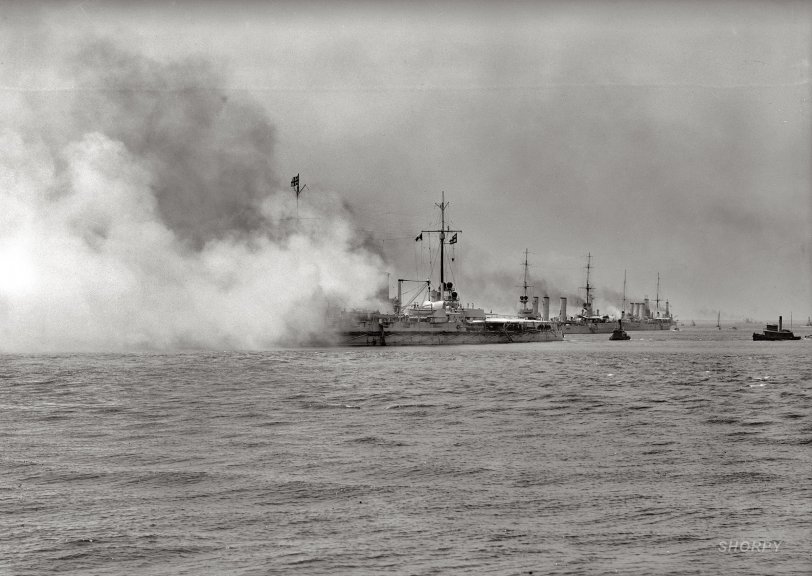


Framed or unframed, desk size to sofa size, printed by us in Arizona and Alabama since 2007. Explore now.
Shorpy is funded by you. Patreon contributors get an ad-free experience.
Learn more.

- Texas Flyer wanted
- Just a Year Too Soon
- WWII -- Replacing men with women at the railroad crossing.
- Yes, Icing
- You kids drive me nuts!
- NOT An Easy Job
- I wonder
- Just add window boxes
- Icing Platform?
- Indiana Harbor Belt abides
- Freezing haze
- Corrections (for those who care)
- C&NW at Nelson
- Fallen Flags
- A dangerous job made worse
- Water Stop
- Passenger trains have right of way over freights?
- Coal
- Never ceases to amaze me.
- Still chuggin' (in model form)
- Great shot
- Westerly Breeze
- For the men, a trapeze
- Tickled
- Sense of loneliness ...
- 2 cents
- Charm City
- What an Outrage
- Brighton Park
- Catenary Supports
Print Emporium
Smoke on the Water: 1912

June 3, 1912. " Hampton Roads, Virginia. German squadron visit to U.S." Details of the port call here. Harris & Ewing Collection glass negative. View full size.
Warspite
The Little Coach, you're absolutely right. Warspite was indeed an oil-fired ship. Of course I only remembered this after doing some googling and, annoyingly, after I posted my comment. Bear in mind I never met my grandfather in person and that he died many years ago, all I can go on is what my father told me about his fathers service. I believe he started as a stoker on other ships (obviously not on the Warspite as I initially believed) and must have moved on to other work, possibly gunnery, by the time of his serving on the Warspite at Jutland. That'll teach me to type a post before checking the facts eh?
Warspite
Warspite was oil-fired, not coal-fired. Which means that the stoker's job involved turning valves, not digging coal.
The Kaiser rolls.
That's SMS Moltke in the foreground, and then the cruisers SMS Stettin and SMS Bremen.
Jutland 1916
Duh! Just remembered that the Battle of Jutland was in 1916 not 1917. Warspite was hit 13 times but was so well constructed that little damage was suffered. Constructed in 1915 she served in WWII as well and was scrapped in 1947. (After breaking free on her final journey to the breakers and running aground on the Cornish coast)
Royal Navy website is at:
http://www.royal-navy.mod.uk/server/show/nav.3916
WWI Stokers
My grandfather was a stoker on HMS Warspite in the First World War. A very similar battleship to those pictured. Apparently stokers were expected to shovel about 6 or 7 tons of coal a day. Not sure how many were at work at any one time but those ships must have gone through a lot of coal. He was at the battle of Jutland in 1917 when the Warspite was hit by German shellfire, damaging its steering gear such that it spent most of the battle steaming in circles while the Germans shelled her. All that shovelling must have made him strong. After the war when thousands left the forces and were desperate to find work, he applied for a job at a building site in London only to be refused by the foreman on account of his small stature. At which point he asked the foreman to lay a shovel on the ground and stand on the business end. He proceeded to pick up the shovel... with the foreman standing on it! He got the job.
























On Shorpy:
Today’s Top 5